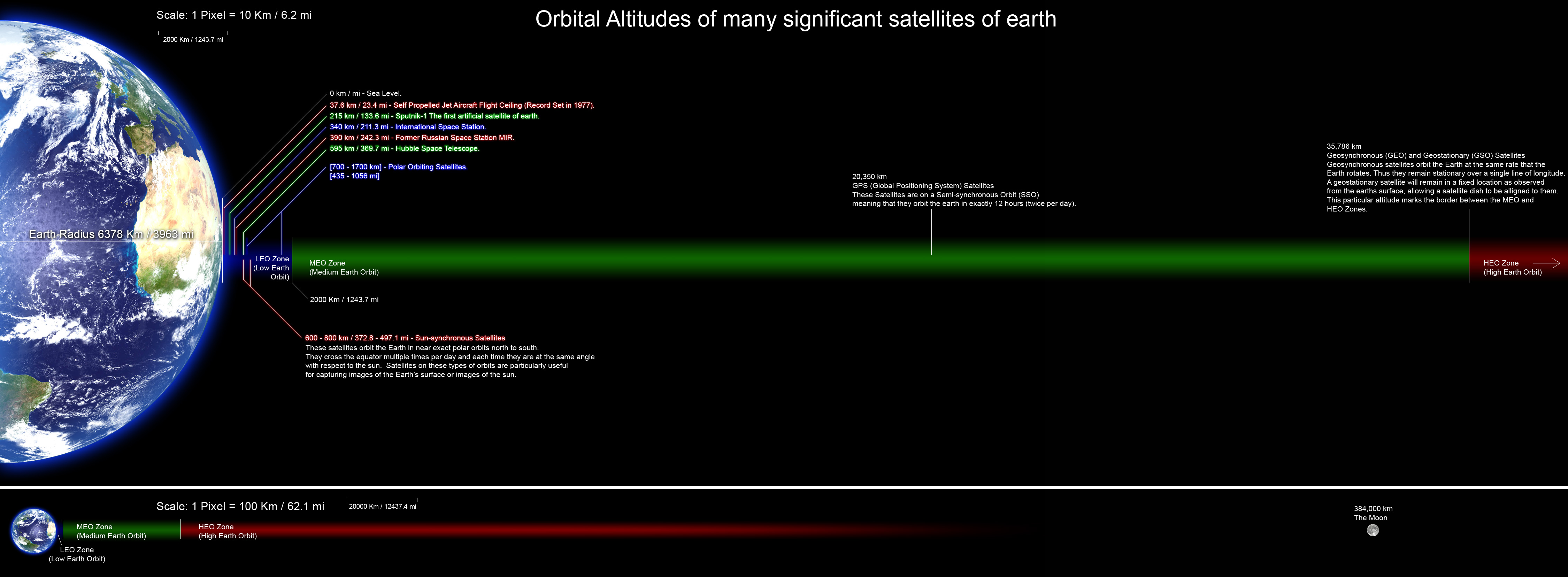random q why is the ISS in low earth orbit? doesn't that mean they expend more fuel in the long run boosting it? @thekarachikid @imzeesh
— takhalus (@takhalus) May 25, 2013
Takhalus, I thought I'd flesh out a slightly better answer for you over here!
To answer the first part of your question, 'Why is the ISS in low earth orbit?' (or LEO as it is commonly abbreviated) we need to define what LEO is.
Simply put, a low earth orbit is any orbit that extends from the surface of the Earth to an altitude of 2,000 km (approx. 1,243 miles). However, this is a rather general definition; after all you probably don't want something orbiting at an altitude of, say, 10,000 ft for a number of practical reasons - 1) It could...smack into a mountain, 2) at that altitude it may be a tad bit annoying for pilots (or the odd skydiver), and 3) the atmospheric drag will want to bring it down rather quickly (the atmosphere 'thins out' with altitude)
So what you may see defined as the LEO range in a lot of textbooks is 150 - 1000 km, well above significant drag producing atmosphere but well below the Van Allen radiation belts which start at around an altitude of 2,400 km.
Ok, so with the range defined more or less, why operate here? Well, the ISS being a manned research station requires frequent support from spacecraft delivering supplies, removing waste and changing crew. It would be desirable then to not have to travel too far to get to the ISS which happens to orbit Earth at an altitude of about 340 km.
Secondly, those radiation belts mentioned above, are bad news for electrical systems and the astronauts aboard. Charged particles can penetrate any of the modules that make up the ISS and interact with the electrons within computer systems creating false values or causing component failure. All satellites, spacecraft and high altitude aircraft have some kind of shielding or 'radiation hardening' built-in to discourage such phenomena but there's no perfect solution and this is an active area of research and development.
Note: The Van Allen belts aren't the only source of radiation. Cosmic rays play a large role in disrupting systems too (on Earth, and in space). CCD (charge-coupled device) imagers used in astro-photography often detect cosmic rays, which show up on the captured image as an artifact. CCDs have electron wells for each pixel, and cosmic rays interact with these wells exciting electrons just as photons of light are intended to do to create an image. There are other sources of radiation as well - Solar activity etc.
Lastly, reliable communication with the ISS is of concern too, and in an LEO signal delays are minimised (low latency).
So, LEOs are great if you have to make regular trips, avoid radiation and maintain reliable communication. The disadvantages?
Although, LEOs are above the significant drag producing atmosphere (above 80 km), that doesn't completely eliminate the problem. The atmosphere still exists at low-earth orbit altitudes, and as thin as it may be it still produces some drag.- enough to rob the ISS of its energy and cause orbital decay. The station's orbit is maintained by regular boosts given to it by it's own support module (Zvezda), the visiting Progress supply spacecraft, the European Space Agency's ATV service module, or in the past, by the Space Shuttle Orbiter.
Additionally, a Solar maxima will heat the atmosphere increasing the altitude of the drag producing region. As a result, orbital energy will be robbed at a higher rate and larger corrections will be required (See figure below).
| This plot shows the orbital height of the ISS over the last year. Clearly visible are the re-boosts which suddenly increase the height, and the gradual decay in between. The height is averaged over one orbit, and the gradual decrease is caused by atmospheric drag. As can be seen from the plot, the rate of descent is not constant and this variation is caused by changes in the density of the tenuous outer atmosphere due mainly to solar activity. (Source) |
Note: The ISS's operates within an altitude range of approx. 280 km - 470 km. The upper limit is also governed by the performance of the supply spacecrafts that have to successfully dock with station.
Another disadvantage of LEO is the high orbital speed (~8km/s). For objects that need to remain over certain regions of Earth for an extended period of time, like a telecommunications satellite, this orbit doesn't work out quite so well. This isn't really an issue for the ISS's mission.
Hope this helps - I've included the 'NASA Reference Guide to the ISS' and a diagram detailing various orbits from LEOs to HEOs.
NASA - Reference Guide to the International Space Station
